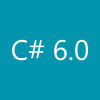If you are a developer and using C# .NET to build your application, you may need to access the Application Data (AppData) folder of all the user accounts currently created in a specific system. The .NET framework exposes API to detect only the logged-in user's AppData folder.
To get the path for all the users of the system, you have to find it from the Windows Registry. Today we will discuss on that topic with a piece of code. Continue reading.

